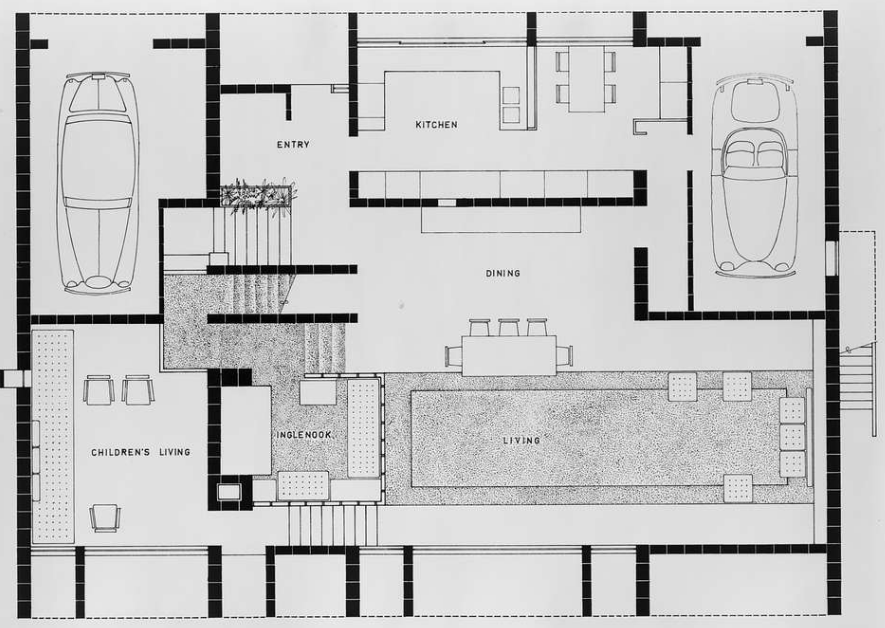 If you’ve been in the construction industry for any length of time, you’ve undoubtedly encountered floor plan designs. These plans show the layout of a building or home from above. Architects create them for their Clients, but you might also use them for other purposes. This article will explain what floor plan designs are, how they are created, and why you should consult with an architect before making your final decision. If you’re still not sure, keep reading and look into ideas at ADU Plans, Floor Plans & House Designs – UnitedDwelling.com,
If you’ve been in the construction industry for any length of time, you’ve undoubtedly encountered floor plan designs. These plans show the layout of a building or home from above. Architects create them for their Clients, but you might also use them for other purposes. This article will explain what floor plan designs are, how they are created, and why you should consult with an architect before making your final decision. If you’re still not sure, keep reading and look into ideas at ADU Plans, Floor Plans & House Designs – UnitedDwelling.com,
Plans that show the layout of a home or building from above
Floor plan designs are architectural drawings that depict the layout of a house or building from above. This design is a useful tool to determine room allocations and furniture placement. Floor plans fall under the category of orthographic projection drawings and are also used for parking lot planning, exhibit plans, and garden plans. According to the American Enterprise Institute, living space per person has doubled in the last 40 years.
In addition to showing the layout of the structure from above, floor plan designs also feature reference symbols to refer users to more detailed information. Elevation symbols refer to exterior and interior elevations of the house. Section symbols, meanwhile, refer to detailed wall sections. They are shown as a circle with a reference number and an arrow pointing in the direction of the cut. In addition to floor plan designs, a cross section can be used to see other parts of the building, such as a basement.
Architects create them
Many Architects create floor plan designs as a way to sell their designs. Before home computers, floor plans were printed in pattern books and developer’s catalogs. During the 1950s and 1960s, this was a popular method of advertising and selling. But these days, architects use floor plan designs in a variety of different ways. Let’s take a look at how these floor plans are created. And how can you benefit from them?
The process of creating a floor plan begins with an architectural legend. This legend explains the symbols used on the floor plan. Different construction companies use different symbols. While similar-looking symbols may represent the same thing, they can mean different things to construction workers. Therefore, it is important to understand which symbols are common to floor plan designs and how to interpret them. Here are some common symbols used on a floor plan:
Clients consult them
Many interior design firms will provide clients with a floor plan before deciding on the style and theme of their home. Becky Ross, owner of Becky Ross Design, provides clients with a printed version of the design, which contains suggestions, ideas, and color palettes. These plans allow clients to make informed decisions and selections about the design and layout of their home. Here are some important tips to help you select the best floor plan for your home.
To start, make sure that your floor plan designs are drafted to scale. Drafting to scale reduces the size of the drawing. A common scale is 1/4 inch per foot. When drafting the floor plan, consider different uses and sightlines for each component. Finally, organize the floor plan in such a way that it takes into account all the various components of a house. If you cannot visualize the finished room, you should seek professional assistance.
They’re used for many other purposes
You may not realize it, but floor plan designs are not just for construction projects. In fact, they are used for many other purposes as well. For example, seating plans are used to distinguish passengers from regular guests at an event. They are useful for dinner parties, formal meetings, and even airplanes! Not to mention that floor plan designs are often used to generate and design a garden. A good garden design can give you the pleasure of being close to nature.
Another popular use for floor plan designs is in the construction industry. They are used to show how rooms and spaces relate to one another. Floor plans also depict how circulation flows between the rooms. Whether you’re planning a new home or remodeling an old one, a floor plan will help you visualize what your space will look like when finished. To create a floor plan, you’ll need to know what features you want your home to have and how they’ll fit together.
They’re difficult to understand
If you’ve never tried reading floor plan designs before, it’s a good idea to get a visual clue by making a list of things you frequently do and high-importance events. These will help you to understand the different symbols and how to read a floor plan properly.If you’re not an architect, you may find floor plan designs hard to read and interpret. These designs may be in an unfamiliar language, or they may have a design that is extremely difficult to decipher. In either case, it’s best to work with a professional to help you understand what’s being presented. Using an online tool such as Houzz can also help you make sense of floor plans.
